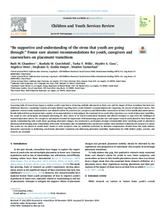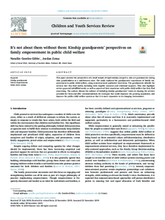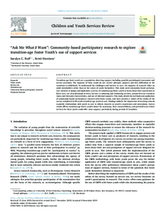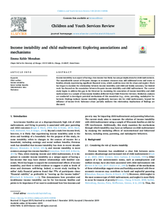Displaying 771 - 780 of 2176
This qualitative research study examined foster care alumni’s advice for youth in care, caregivers, and child welfare caseworkers on how to best handle placements moves.
This paper presents the perspectives of a small sample of eight kinship caregivers, who are grandparents raising their grandchildren in a mid-Western state [in the USA].
Exposure to childhood victimization and adversity (CVA) is pervasive for child welfare (CW) involved youth. However, most research with CW samples has focused on types of maltreatment and fails to recognize the additive influence of exposure to CVA beyond maltreatment. For this study, a subsample aged 8 to 17 (n = 1,887) was drawn from the National Survey of Child and Adolescent Well-Being (NSCAW) II.
The purpose of this study was to seek a more thorough understanding of the education and preparation adoptive parents receive regarding potential child issues in international adoption.
This study used a dataset of 1426 young adults experiencing homelessness (YAEH) from 7 different US cities to examine the historical risk and resilience characteristics of those involved in foster care alone, juvenile justice alone, both systems (dual status), and no system involvement.
A number of psychological factors have been found to be relevant in terms of problematic use of digital devices. Some of them may serve as risk factors, while others mean protection. The main goal of present study was to determine user profiles and to examine differences among them based on several psychological variables using cluster analysis.
For this study, a sample of youth in foster care was used to provide a new examination of the relation between child maltreatment exposure and internalizing symptoms, to test the possible moderating effects of both appraisals and spirituality, and examine differences between children and adolescents.
The current study begins to address a gap in the literature by examining the association of income instability and child maltreatment in a sample of low-income families deflected from Child Protective Services.
This study examined family- and state child welfare system predictors of successful reunification in the United States, or reunification with no reentries into foster care.
Using data from the U.S. National Youth in Transition Database (NYTD), combined with the Adoption and Foster Care Analysis Reporting System (AFCARS), the present study provides an analysis of the risk and protective factors contributing to homelessness among a nationwide sample of foster care youth at age 21, 29% of whom had experienced homelessness.





